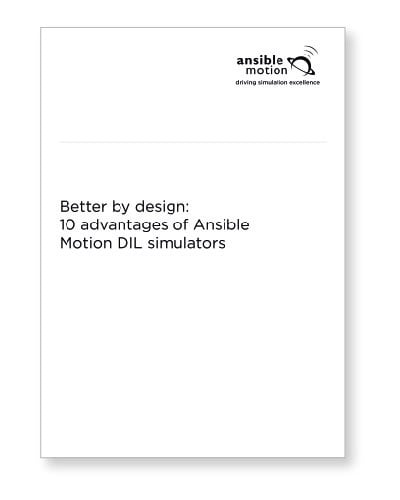.jpg?width=400&height=125&name=Vehicle-Electronics-logo%20(2).jpg) Of all the connections between vehicle and driver, the steering system, as the primary means of controlling the vehicle, is perhaps the most crucial. How it responds to inputs and communicates back to the driver is arguably one of the most nuanced behaviours of the whole driving experience.
Of all the connections between vehicle and driver, the steering system, as the primary means of controlling the vehicle, is perhaps the most crucial. How it responds to inputs and communicates back to the driver is arguably one of the most nuanced behaviours of the whole driving experience.
Crucially, steering feel can define a vehicle’s dynamic character and, as the industry moves towards more driver assistance, establish driver trust. The fine tuning of steering systems has long been a key topic for engineers who have to consider not just the hand wheel and steering rack but also bushings, tyres and the entire suspension system. They have already embraced electric power assisted steering (EPAS), variable ratio steering, even four-wheel steering and torque vectoring.
.jpg?width=650&height=431&name=behind-the-wheel%20(4).jpg)
Now, the industry has progressed to steer-by-wire, whereby there is no mechanical connection between the hand wheel and steering rack. Toyota has been an early advocate. It’s already legal in Japan, the EU and China – the latter believed to be the most stringent – while the USA is still to ratify the technology. Toyota has said its system was tested by hundreds of people, both in and out of the company to ensure it is as intuitive as and safe as possible.
Testing steer-by-wire with the adequate number of people on a test track or proving ground can be achieved, but the process can take months, with little or no guarantee that conditions will be representative each time. It’s the lack of repeatability, not to mention the issues of putting lay drivers in such a scenario, that has resulted in Driver-in-the-Loop (DIL) simulation emerging as a development and testing game changer.
The DIL simulator’s strength lies in its ability to combine realistic test conditions seamlessly with the limitless variability, consistency and repeatability of the digital realm. Convincing human drivers they are moving through an environment at a certain speed or steering in a particular direction is not easy, but today’s engineering-class DIL simulators offer the high-fidelity, high-dynamic, human-centric immersion qualities needed to replicate everything from aggressive manoeuvres to the nuances of the subtle feedbacks inherent with steering in real time. And all this can happen early and often in the development process before any metal is cut.

Moreover, OEMs with simulators in different regions can share their vehicle models so teams in the USA, Asia and Europe can drive the same car on the same day in the same conditions, adjust and then all drive it again, enabling more people to have input.
As the vehicle design matures, DIL simulators continue to shine by providing ready-to-go sandboxes for fine-tuning without the constraints of waiting for physical updates or optimal test conditions. Nowadays, engineers can even point a physical camera at a simulator’s projection screen to acquire a video feed. The lines between real and virtual might be blurred but the results are crystal clear.
As the automotive industry edges – albeit slower than many predicted – towards autonomy, steering will continue to take centre stage in the cabin as the key physical and psychological touch point between manual and autonomous control. DIL simulators are already hard at work in engineering centres around the world determining how to make this seamless transition between human and machine control. For many, these simulators offer a unique avenue for participants to safely experience the sensations of autonomous driving for the first time, providing crucial insights into system responsiveness and occupants’ reactions and behaviour. It’s a fascinating opportunity for this generation.
As the industry navigates towards a future of autonomous possibilities, the steering system, in all its digital glory, continues to steer the course of automotive innovation, just with a little more guidance from DIL simulators.
Read the full article online in the April 2024 edition of Vehicle Electronics.



